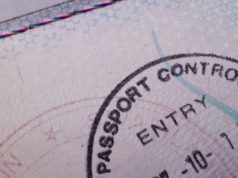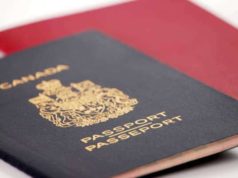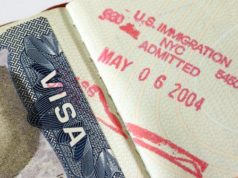
Guide to Getting a Financee Visa
If you are planning to marry your fiancee who is a foreign national and bring him or her to the United States legally, a fiancee visa is the way to go. In this article, we will guide you through the process of obtaining a fiancee visa, including eligibility requirements, necessary documents, and the application process.
What is a Fiancee Visa?
A fiancee visa, also known as a K-1 visa, is a non-immigrant visa that allows a foreign fiance(e) of a U.S. citizen to enter the United States for the purpose of getting married. Once the marriage takes place, the foreign spouse may apply for permanent residency in the United States.
Eligibility Requirements
To obtain a fiancee visa, both the U.S. citizen petitioner and the foreign fiance(e) must meet certain eligibility requirements. The following are the eligibility requirements for obtaining a fiancee visa:
– The U.S. citizen petitioner must be legally able to marry, meaning that he or she is not already married or in a civil partnership.
– Both the U.S. citizen petitioner and the foreign fiance(e) must be free to marry each other and intend to marry within 90 days of the foreign fiance(e)’s arrival in the United States.
– The couple must have met in person within the past two years, unless the in-person meeting would violate cultural or religious customs.
– The U.S. citizen petitioner must meet the minimum income requirements to prove that he or she can financially support the foreign fiance(e) in the United States. The minimum income requirements vary depending on the petitioner’s household size.
Necessary Documents
To apply for a fiancee visa, the U.S. citizen petitioner must file a Petition for Alien Fiance(e) with U.S. Citizenship and Immigration Services (USCIS). The following are the necessary documents that must be submitted along with the Petition for Alien Fiance(e):
– Form I-129F, Petition for Alien Fiance(e)
– Evidence of the petitioner’s U.S. citizenship, such as a birth certificate, passport, or certificate of naturalization.
– Evidence that both the U.S. citizen petitioner and the foreign fiance(e) are free to marry each other, such as divorce decrees or death certificates if either party has been previously married.
– Evidence of the couple’s in-person meeting, such as photographs, travel itineraries, or affidavits from witnesses.
– Evidence of the U.S. citizen petitioner’s financial ability to support the foreign fiance(e) in the United States, such as tax returns, pay stubs, or a letter from the petitioner’s employer.
– Form G-325A, Biographic Information, for both the U.S. citizen petitioner and the foreign fiance(e).
– If the foreign fiance(e) has children, evidence of the relationship between the foreign fiance(e) and the children, such as birth certificates or adoption papers.
Application Process
The following is a step-by-step guide to the application process for obtaining a fiancee visa:
Step 1: File the Petition for Alien Fiance(e)
The U.S. citizen petitioner must file the Petition for Alien Fiance(e) with USCIS. The current filing fee is $535. USCIS will review the petition and, if it is approved, will forward it to the U.S. consulate or embassy in the foreign fiance(e)’s home country.
Step 2: Complete the Application for Nonimmigrant Visa
The foreign fiance(e) must complete the Application for Nonimmigrant Visa (Form DS-160) and pay the non-refundable visa application fee, which varies depending on the country. The foreign fiance(e) must also schedule an appointment for an interview at the U.S. consulate or embassy.
Step 3: Attend the Visa Interview
The foreign fiance(e) must attend the visa interview at the U.S. consulate or embassy in his or her home country. At the interview, the consular officer will ask questions about the relationship between the U.S. citizen petitioner and the foreign fiance(e) and may request additional documentation. If the consular officer approves the visa, he or she will place the visa in the foreign fiance(e)’s passport.
Step 4: Enter the United States
Once the foreign fiance(e) receives the visa, he or she may enter the United States within six months. Upon entry, the foreign fiance(e) will be issued a Form I-94, Arrival/Departure Record, which shows how long the foreign fiance(e) may remain in the United States.
Step 5: Get Married and Apply for Permanent Residency
After getting married within 90 days of the foreign fiance(e)’s entry into the United States, the couple may apply for permanent residency for the foreign spouse by filing Form I-485, Application to Register Permanent Residence or Adjust Status. The current filing fee for Form I-485 is $1,225, which includes a fee for biometrics (fingerprinting). The process for obtaining permanent residency can take several months.
Conclusion
Obtaining a K-1 visa for your foreign fiancee can be a complex and time-consuming process, but by following the steps outlined in this article, you can ensure that the process goes as smoothly as possible. Remember to carefully review the eligibility requirements and necessary documents before filing the petition, and be sure to attend the visa interview with all required documentation in hand. With patience and persistence, you can successfully bring your fiancee to the United States to begin your life together.
Fiancé Visa Explained
In order for a non-citizenof the United States to participate in a legally-recognized marriage to a citizen of the United States, a variety of documentation, forms, applications and petitions exist for completion. A failure to meet such guidelines and a failure to adhere to the expressed permission of the United States Citizenship and Immigration Services Bureau with regard to legal entry via a fiancé visa, a legal marriage cannot take place
Forms Associated with the Finance Visa:
Petition for Alien Fiancé (I-129F): The primary form that must be completed to determine the Fiancé Visastatus of a non-citizen spouse.
K-1 Fiancé Visa: This type of visa allows a non-citizen spouse of a citizen of the United States to legally remain in the United States for 90 days. During this juncture, the individual is expected to marry
K-2 Fiancé Visa: This type ofFiancé Visa is awarded to unmarried children under the age(s) of 21 produced by the marriage of a citizen of the United States and a non-citizen. All or any children must be claimed on the K-1 Fiancé Visa belonging to the non-citizen in order to be awarded K-2 Fiancé Visas
K-3 Fiancé Visa: This type ofFiancé Visa allows an immigrant to legally remain within the United States on a temporary basis. The K-3 Visa is issued to individuals who are non-citizens, married, and/or above the age of 21
K-4 Fiancé Visa: A K-4 Fiancé Visa is a temporary visa awarded to unmarried children under the age of 21, which provides the same rights as a K-3 Fiancé Visa
I-485 (Adjustment of Status Application): The adjustment of status application form changes the temporary legal status of a non-citizen to legal and permanent residential status
Expressed Permission Granted by a Fiancé Visa
A K-1 Visa allows a non-citizen spouse 90 days to legally enter the United States in order to be married. Once an application for the adjustment of status is completed, the non-citizen will be able to enjoy legal, permanent residence – this application is a legal declarationrecognizing the marriage between a foreign-born individual without legal residence and an American citizen. However, the following stipulations apply to unmarried children under the ages of 21:
Unmarried children under the age(s) of 21receive a year-long K-2 resident status in the event that they are claimed on the K-1 Visa belonging to the non-citizen spouse(s)
Children who have received K-2 Visas must file for an adjustment of status prior to that year’s end.





























